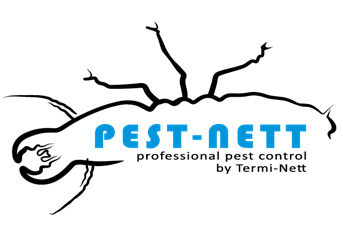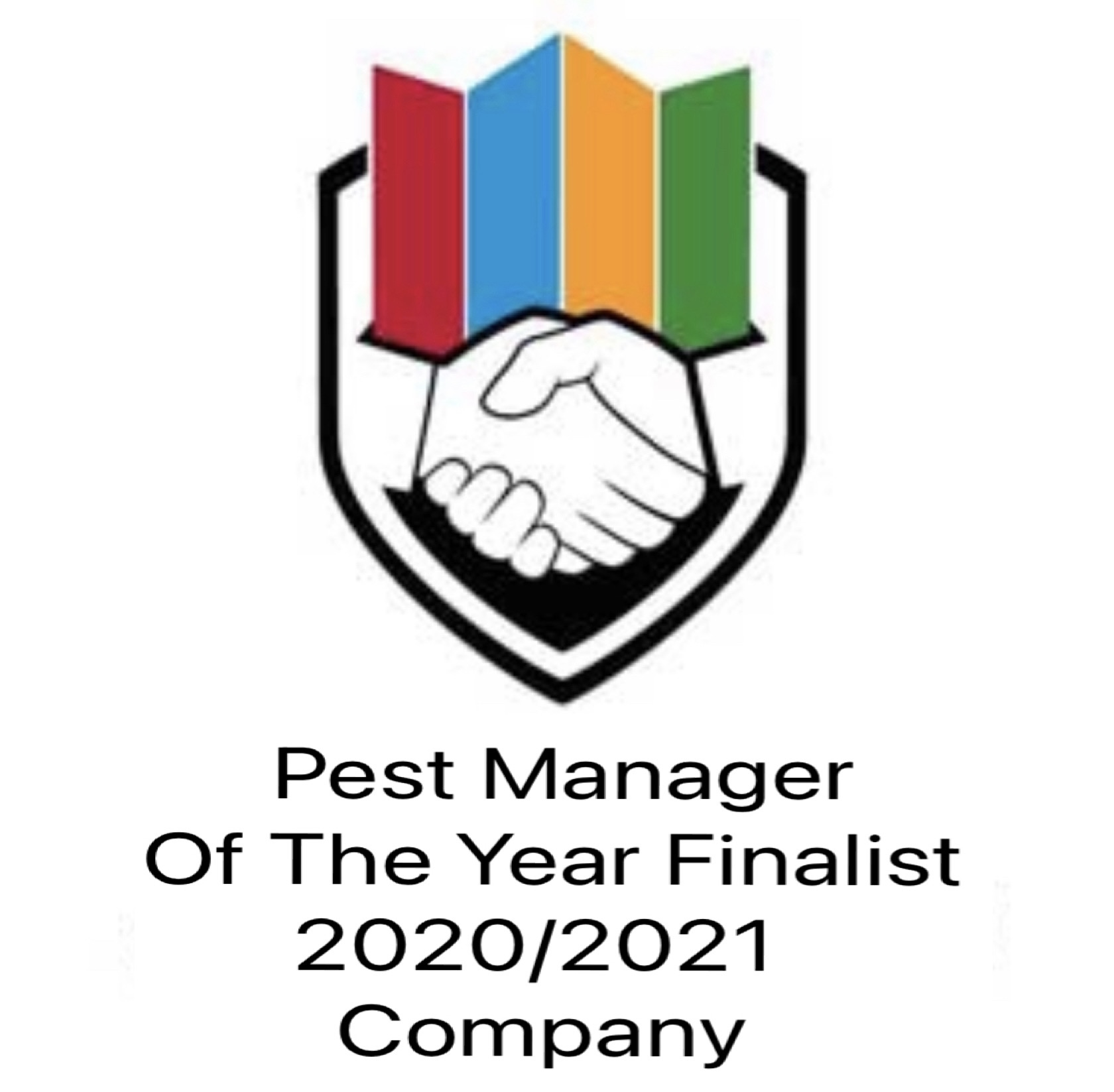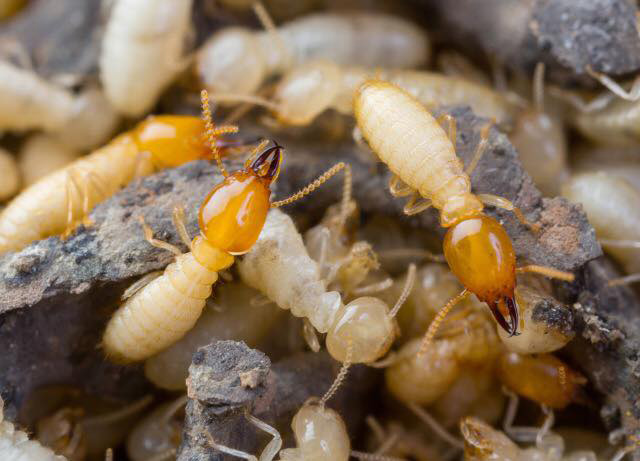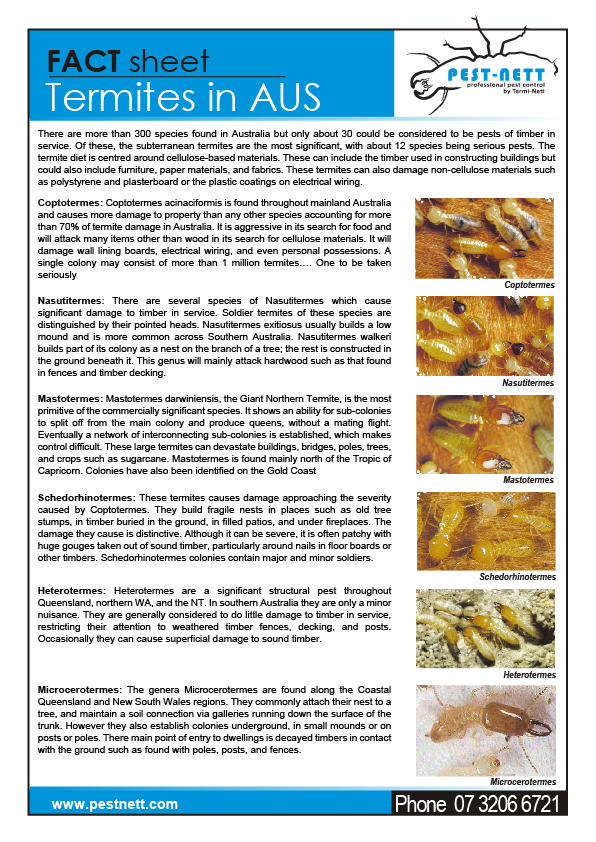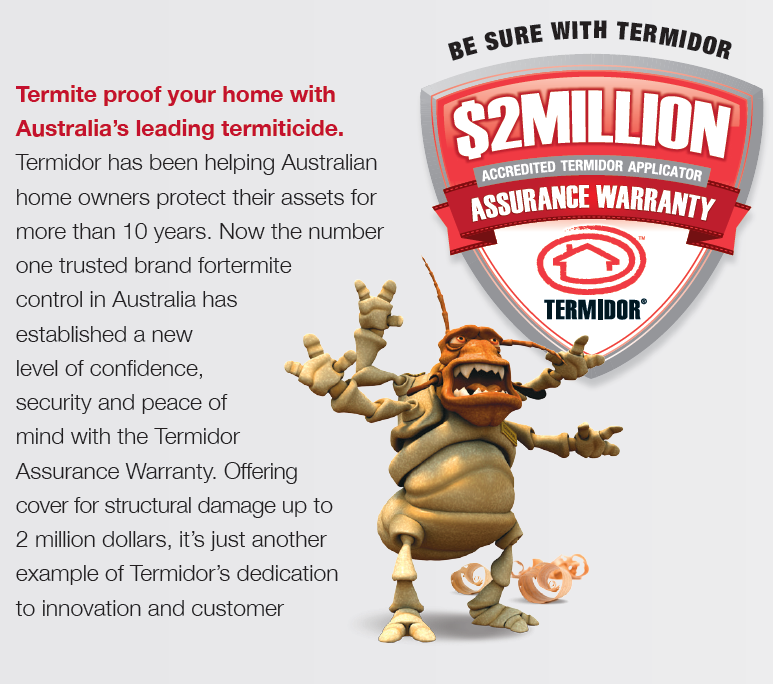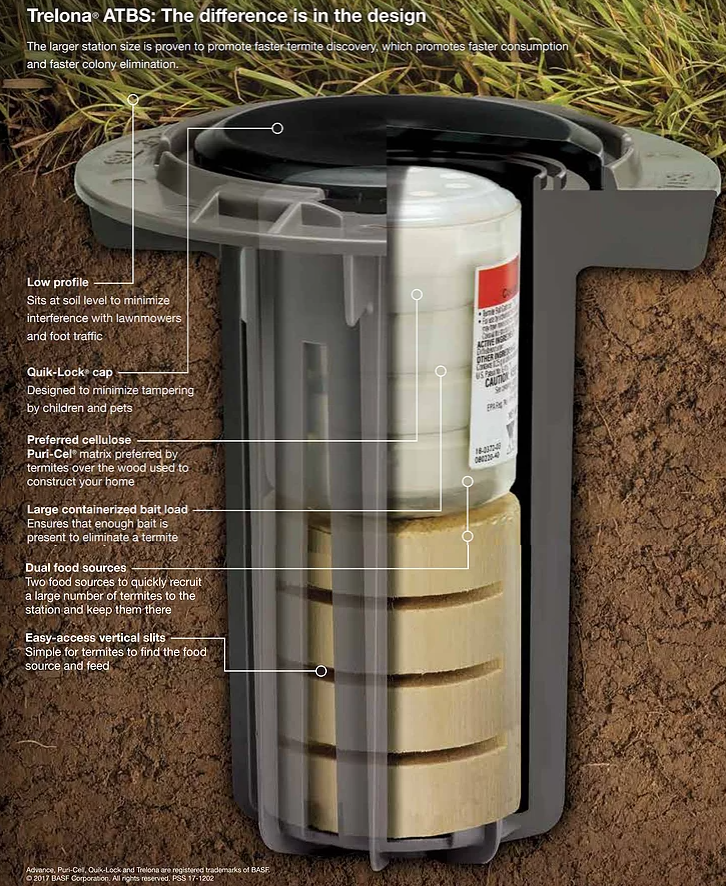The CSIRO states that 1 in 4 homes will be affected by termites (white ants) in its lifetime.
The Australian Standard (AS 3660) recommends that homeowners have termite inspections carried out by a licensed pest professional at least every 12 months.
Our professionally accredited and trained pest technicians are backed with more than 40 years combined experience in the industry, ensuring accurate, informative and comprehensive inspection services. With the use of technologically advanced equipment, our technicians are able to detect termites inside the walls, track movement, pinpoint termite entry points and detect excessive moisture within the wall cavities.
How do you treat termites?
Our Termite treatments are the best means to take action versus a termite assault. Your Termite Professional will advise a certain service that best suits your situation. Treating termites can be a complex and difficult inspection or investigation, we begin with an inspection of the structure using timber sounding devices, moisture meters and a radar devise that can scan walls, door frames, window frames etc, once we find active termites in the structure we will then decide depending on how the termites have entered the structure the best way to treat them, this is called a stage 1 treatment which can involve baiting, foaming or dusting treatment methods, once termites have been eradicated from the structure we recommend installing a Termite Chemical Zone or Termite Baiting System around the perimeter of the structure previously known as Termite Barriers. Depending on construction methods of your home will determine what will be the most suitable system. Pest-Nett are accredited installers of Termidor, Termidor HE and Trelona ATBS Termite Baiting Systems.
Protecting the House
Several pest species of termites nest in living trees and tree stumps, from which the workers make subterranean tunnels to timber in buildings within about 50 metres radius of the colony. Most attacks on buildings and timber in service originate from outside – they are remote sites to the nest elsewhere. Chemical and physical protection, to isolate the building, is therefore the normal method carried out by the pest control industry. These barriers are particularly important where the nest cannot be located.
Chemicals can be applied to the soil all around a building to prevent termites from gaining access. These barriers must be renewed at certain time intervals in time which are usually the anticipated effective life expectancy of these chemicals. Physical barriers, when properly applied, can also prevent termite access from the soil to a building.
Chemical Barriers or Zones
Pest-Nett are an accredited installer for Termidor and Termidor HE
Chemical barriers to prevent the access of termites into the wall and roof timbers have been placed around buildings and under concrete slabs in Australia since 1954. Organochlorine insecticides such as dieldrin, aldrin, chlordane and heptachlor were used as chemical barriers until 1995. Since 1995 chemicals which have a shorter period of protection have been approved to prevent termite access to buildings. The chemicals approved are chlorpyrifos and bifenthrin of specific formulations for termites, as for the direct treatment of nests.
The chemicals are applied as aqueous emulsions (oil suspended in water) to a trench dug in the soil around a building. As the soil is replaced the emulsion is applied so that the chemical is distributed throughout the soil forming a complete barrier. Termites will not pass through the soil while the chemical remains active and at a minimum concentration level.
Holes may be drilled at specific intervals through concrete paths, tiles or pavers to allow access to the soil beneath. The insecticide is then injected into the soil both downwards and sideways, forming a chemical barrier beneath covering structures.
Pre-treatment of soil beneath concrete slabs is usually required in the building approval. A second treatment of the soil around the slab is done at completion of the whole building. This later treatment is done when all operations around the building have ceased, thus ensuring that the chemical barrier is not disturbed.
Reticulation systems using perforated PVC pipes can also be installed under and around a slab at construction. Insecticide, to form a barrier, is injected at one point and the pipes deliver it evenly into the soil beneath and around the slab. Re-treatment is done at one point without disturbing the soil or areas around the building. The homeowner usually has the choice of which approved insecticide is used for this method.
An annual inspection of all barriers is necessary to monitor the effectiveness of the chemical. Re-treatments may ne necessary after about 5 years.
Termite Baiting Systems
Pest-Nett are an accredited installer for BASF Trelona ATBS.
Termite Baiting Systems are a bit like traps. They are installed around the perimeter of the building generally 3 meters apart to intercept foraging subterranean termites before they reach your home. Inside the bait station are very low toxicity bait cartridges that the termites will consume until they eradicate themselves and the entire colony. Generally Trelona ATBS Bait Stations require inspecting every six (6) months which is a lot less compared to other systems as well as a substantial cost saving for you. Trelona ATBS can also be retrofitted to some existing Termite Monitoring Systems to provide greater protection and a cost saving for you in the long term.
Get rid of termites
If you’re concerned about termites at your home or business, contact us to arrange an inspection and treatment today!
